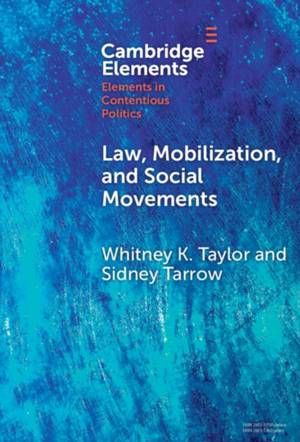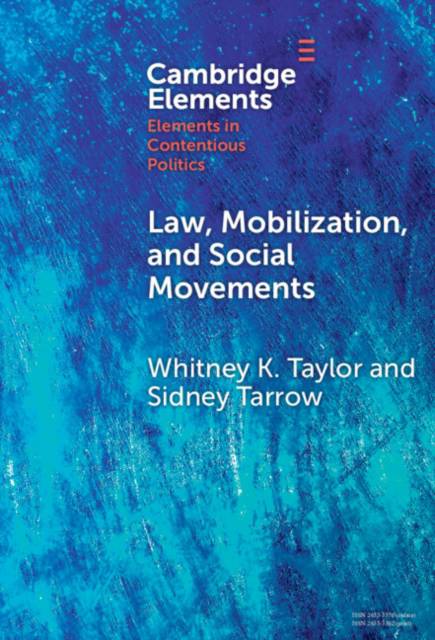
- Afhalen na 1 uur in een winkel met voorraad
- Gratis thuislevering in België vanaf € 30
- Ruim aanbod met 7 miljoen producten
- Afhalen na 1 uur in een winkel met voorraad
- Gratis thuislevering in België vanaf € 30
- Ruim aanbod met 7 miljoen producten
Zoeken
€ 104,95
+ 209 punten
Uitvoering
Omschrijving
Legal and social movement scholars have long puzzled over the role of movements in moving, being moved by, and changing the meanings of the law. But for decades, these two strands of scholarship only dovetailed at their edges, in the work of a few far-seeing scholars. The fields began to more productively merge before and after the turn of the century. In this Element, the authors take an interactive approach to this problem and sketch four mechanisms that seem promising in effecting a true fusion: legal mobilization, legal-political opportunity structure, social construction, and movement-countermovement interaction. The Element also illustrates the workings and interactions of these four mechanisms from two examples of the authors' work: the campaign for same-sex marriage in the United States and social constitutionalism in South Africa.
Specificaties
Betrokkenen
- Auteur(s):
- Uitgeverij:
Inhoud
- Aantal bladzijden:
- 90
- Taal:
- Engels
- Reeks:
Eigenschappen
- Productcode (EAN):
- 9781009493017
- Verschijningsdatum:
- 28/03/2024
- Uitvoering:
- Hardcover
- Formaat:
- Genaaid
- Afmetingen:
- 152 mm x 229 mm
- Gewicht:
- 290 g

Alleen bij Standaard Boekhandel
+ 209 punten op je klantenkaart van Standaard Boekhandel
Beoordelingen
We publiceren alleen reviews die voldoen aan de voorwaarden voor reviews. Bekijk onze voorwaarden voor reviews.











